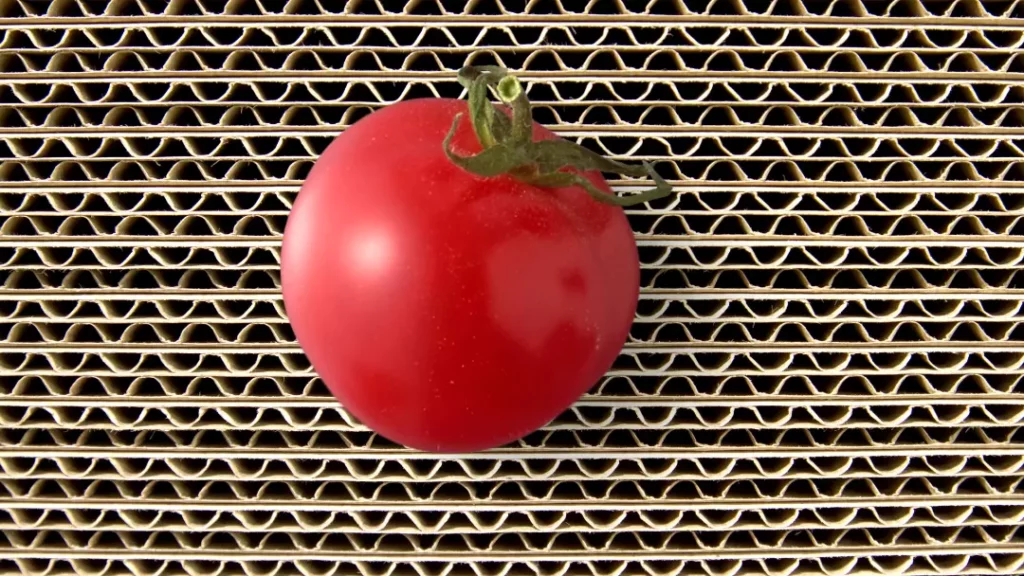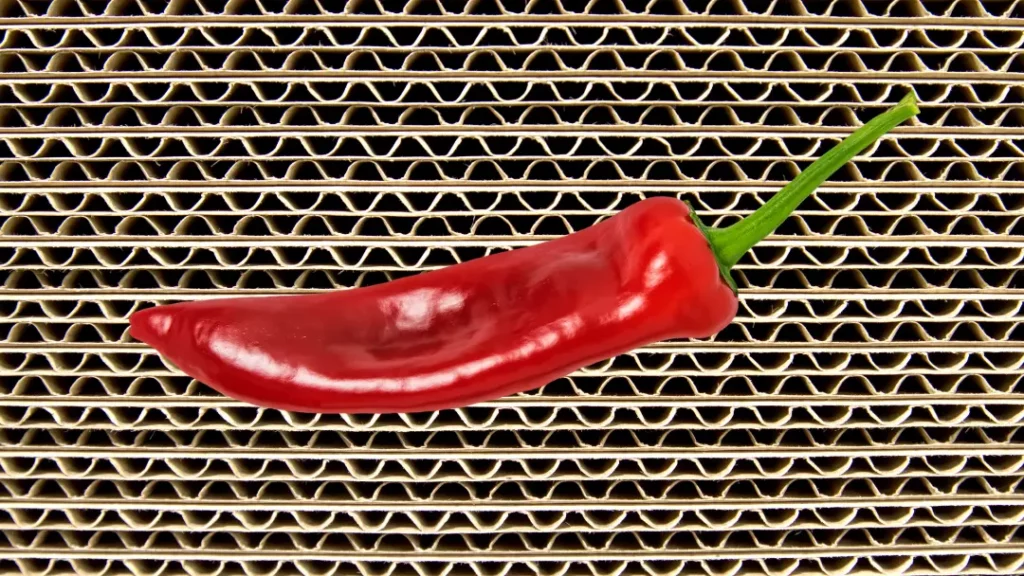As a corrugated packaging company for many food producers, Wertheimer Box considers food safety and corrugated packaging to be both a moral and ethical obligation.
We take this obligation very seriously:
- Making containers out of corrugated board, which studies have found contributes to food safety.
- Employing manufacturing best practices to preserve corrugated safety, including maintaining ISO-9001:2015 certification since 2006.
- Formalizing our commitment by applying for SQF certification for the Manufacture of Food Packaging.
1. Studies of Food Safety and Corrugated Packaging
First, numerous research studies have found corrugated packaging to be an excellent shipping container for preserving food safety. This fact can offer food producers a degree of comfort with this choice of packaging.
We offer evidence from several studies.
Microorganisms Cannot Survive the High Temperatures Used to Produce Corrugated Boards
As reported in Food Safety News, several studies have found that pathogens cannot survive the high temperatures (180 to 200 degrees Fahrenheit) used to manufacture the corrugated board. Therefore, single-use corrugated containers help facilitate food safety.
Corrugated Packaging Outperforms Plastic Crates
Furthermore, in a study conducted by agricultural and food science researchers, corrugated packaging outperformed returnable plastic crates. (The reuse of plastic crates is a common agricultural practice.)
The research, which intentionally inoculated the packaging with microorganisms, found:
-
-
- Corrugated trays kept the produce fresh for up to three days longer.
- Small cuts and scratches on plastic containers promoted the proliferation of both spoiling microorganisms and disease-causing pathogens.
- Plastic containers harbored varying levels of pathogens, presumably because of differences in sanitation.
- Corrugated board trapped microorganisms within its fibers, depriving them of water and killing both pathogens and spoiling microorganisms.
-
Corrugated Containers Rarely Harbor Pathogens
In another study, food safety, microbiology, and toxicology experts at the University of California-Davis swabbed corrugated containers. They were checking these produce containers for the presence of two common pathogens.
Researchers obtained the corrugated containers from three separate end-user locations. Additionally, the containers were produced by various corrugated manufacturers.
Results showed that 99% of the swabbed corrugated samples had pathogen levels that were well below levels that would be cause for concern.
These researchers concluded that single-use corrugated shipping containers were safe for shipping produce. They reiterated the need to recycle corrugated containers after use.
Similar tests are now conducted annually. These studies have reconfirmed the cleanliness of corrugated shipping containers.
Maintaining Corrugated Packaging Safety
A growing body of literature upholds the safety of corrugated boxes for food, and several corrugated packaging considerations can help conserve food safety:
-
-
- Packaging must be kept dry to preserve its antimicrobial characteristics.
- Corrugated shipping containers should not be reused; instead, recycle them. Not only do recycling programs promote food safety but also, they ensure that corrugated packaging is a sustainable solution.
-

2. Our ISO 9001-2015 Certification Contributes to Food Safety in Our Corrugated Packaging
In addition to producing packaging from corrugated boards that researchers have deemed safe, we hold an ISO 9001:2015 certification. We believe our adherence to these practices also contributes to food safety in our corrugated packaging solutions.
Our certification was awarded because we:
-
-
- Demonstrated our ability to consistently provide products and services that meet customer, statutory, and regulatory requirements.
- Applied effective systems and processes to continually improve and assure conformity with customer, statutory, and regulatory requirements that aim to enhance customer satisfaction.
-
For example, our documented management systems help preserve food safety. A few examples of this are the systems we have put in place for:
-
-
- Checking in raw materials.
- Maintaining a clean building.
- Preserving and promoting employee health.
- Protecting packaging from potential contaminants.
- Controlling the chain of custody.
-
For each of these, we have policies, procedures, work instructions, training, and auditing.
Maintaining a Clean Building
We have a written cleanliness program and systems designed to comply with standards for a clean production facility.
For example, our team members sweep the floor and clean their machine areas after every shift. Additionally, we conduct weekly deep-cleaning tasks.
Plus, we have a dust collection system to minimize dust particles in the air. This system gathers dust and corrugated trimmings from the machines.
Additionally, we recycle 100% of our corrugated trimming daily. These and other practices help keep our production facility free from dust, dirt, and other contaminants.
Preserving and Promoting Employee Health
Another way that we promote food safety is by preserving and protecting employee health. For example, we require good personal hygiene practices among our employees. These practices include handwashing and clean work attire.
Employees are not permitted to eat in the production areas.
Since March 2020, we have also enforced strict COVID-19 protocols, such as masking, to help prevent the spread of illness. Additionally, we strongly encourage sick employees to stay home.
Protecting Packaging From Potential Contaminants
Preventing the introduction of potential contaminants is critical in food safety.
Therefore, we take several additional steps to keep packaging safe. For example, we ensure that pallets are clean and free from contamination and vermin, such as birds, insects, or rodents.
Toxins, such as oil, grease, cleaning chemicals, and other contaminants are stored away from corrugated boards and packaging.
Additionally, we prevent the build-up of dust, oil, or grease, which might contaminate packaging.
Finally, we place top and bottom sheets above and below each unit of packaging before we strap it. This prevents packaging from touching the floor or other pallets.
Controlling the Chain of Custody
By controlling the chain of custody, we can better protect our packaging products.
From incoming corrugated sheets through packaging production to loading corrugated packaging on our trucks, we help ensure that there are no breaches in the chain of custody.
This goal includes exit and entry controls. These controls not only help maintain a secure building but also deter the introduction of potential contaminants.
Moreover, we’re prepared for product tracing in the unlikely event that a product is recalled. Further, we have a recall plan.

3. We’re Formalizing Our Food Safety Commitment
The SQF Institute is an international body that focuses on global food safety and quality. It provides SQF Food Safety Codes for stakeholders within the food manufacturing and production market.
Wertheimer Box is applying for the SQF Certification specific to Codes for Manufacture of Food Packaging, 9.0. The 93-page Code is divided into two parts:
- 15 comprehensive steps to achieve and maintain SQF certification
- 32 pages of the SQF Food Safety Code itself
SQF Food Safety Code Packaging, 9.0
Part A is an introduction to the SQF Code, steps for achieving SQF certification, and the requirements for maintenance of SQF certification.
Part B encompasses two segments of the Food Safety Code itself as to the required procedures.
-
-
- Manufacture of Food Packaging
- Good Manufacturing for Production of Food Packaging
-
The SQF Code: Manufacture of Food Packaging
The first module of Part B is the “Manufacture of Food Packaging” Among other requirements in the eight-part code, it includes an annual (or more frequent) review of methods, policies, and procedures to achieve the following:
-
-
- Documenting management’s commitment to food safety.
- Promoting a food safety culture.
- Food safety control methods, frequency, and responsibility.
- Specifications, controls, implementation, and verification of steps to maintain food safety in the supply chain—from raw materials to commercial use.
- Product sampling, inspection, and analysis by nationally-recognized methods.
- Product traceability and crisis management.
- Compliance with local and federal regulations.
- Adherence to Good Manufacturing Practices.
- A food safety plan following the 12 steps identified in the Codex Alimentarius Commission HACCP guidelines.
-

Implementing HACCP Guidelines
Hazard analysis and critical control points (HACCP) for corrugated packaging is:
“a systematic approach to the identification, evaluation, and control of food safety hazards.”
To that end, we analyze, improve, oversee, review, train, document, and audit every step in our production process. These records help ensure that food safety procedures are followed.
Good Manufacturing for Production of Food Packaging
The second section of Part B is Module 13. It focuses on Good Manufacturing for Production of Food Packaging. Each section requires analysis, methods, responsibilities, oversight, review, training, and documenting numerous aspects of food safety in production of food packaging.
The eight sections in Module 13 include:
Guidelines for Site Location and Premises
-
-
- An assessment, identification of any product safety risks, and implementing controls at the site location or premises.
- Complying with specifications for building materials, such as floors, drains, traps, building structure (walls, partitions, ceilings, doors) for manufacturing, handling, and storage areas.
- Adhering to specifications for lighting and light fittings.
- Protecting against dust, insects, and other pests.
- Proper ventilation.
- Observing specifications for equipment design, construction, installation, operation, and maintenance.
- Ensuring paths, roadways, loading and unloading areas do not present a food safety hazard.
-
Guidelines for Site Operations
-
-
- Conforming to standards for repairs and maintenance of the facility, equipment, and building.
- Ensuring that staff members and contractors comply with hygiene requirements.
- Fulfilling requirements for the calibration and recalibration of equipment used for measuring, testing, and inspecting equipment.
- Documented pest prevention programs.
- Recording and implementing cleaning and sanitation programs
-
Personal Hygiene and Welfare
Among other specifications, this section includes:
-
-
- Requirements for personnel and visitors who may have infectious diseases, open wounds, abrasions, and other potential risks to food safety.
- Observing proper handwashing practices.
- Conforming to specifications regarding clothing, hair, shoes, jewelry, and other personal effects.
- Maintaining clean restrooms, break rooms, and changing rooms.
-

Personnel Processing Practices
This section of Module 13 contains additional requirements for personnel. For example, it addresses:
-
-
- Compliance with specifications for personnel who manufacture, handle, or store products.
- Adhering to guidance for eating, drinking, or smoking in these areas.
- Minimizing the risk of contamination by controlling the flow of people in these areas.
-
Water, Ice, and Air Supply
Section 13.5 pertains to the access of clean hot and cold water and ensuring potable water does not become contaminated. It warrants that potable water complies with all local, national, and/or international quality standards. It also defines requirements for the use of dry ice, compressed air, and/or other gasses.
Receipt, Storage, and Transport
The next section allows for the safe, hygienic storage of materials. For example, it details how to receive, store, and transport hazardous chemicals and toxic substances.
Separation of Functions
The “Separation of Functions” section includes:
-
-
- Documenting, implementing, and communicating responsibilities and methods to prevent contamination by foreign matter.
- Extensive equipment inspections, including machines, pallets, cutting tools, and more.
-
It also includes managing any contamination incidents.
Waste Disposal
The last section offers guidance for the responsibility and methods to:
-
-
- Collect, handle and store waste.
- Remove hazardous and toxic chemicals.
- Avoid waste accumulation.
- Ensure the path of waste removal does not contaminate packaging.
-
Wrap-up
As you can see, the SQF certification requirements are extensive—perhaps even daunting to some packaging manufacturers. At Wertheimer Box, we believe the safety of our food supply is paramount. We’re eager to formalize our ongoing commitment to that endeavor with the third-party audit necessary to receive SQF certification.
Jeff O'Boyle

Get More Industry News Like This
Welcome to the Wertheimer Family! We'd like to keep you up to date with industry changes and news. Subscribe to receive our occasional news, updates and articles direct to your in-box.
